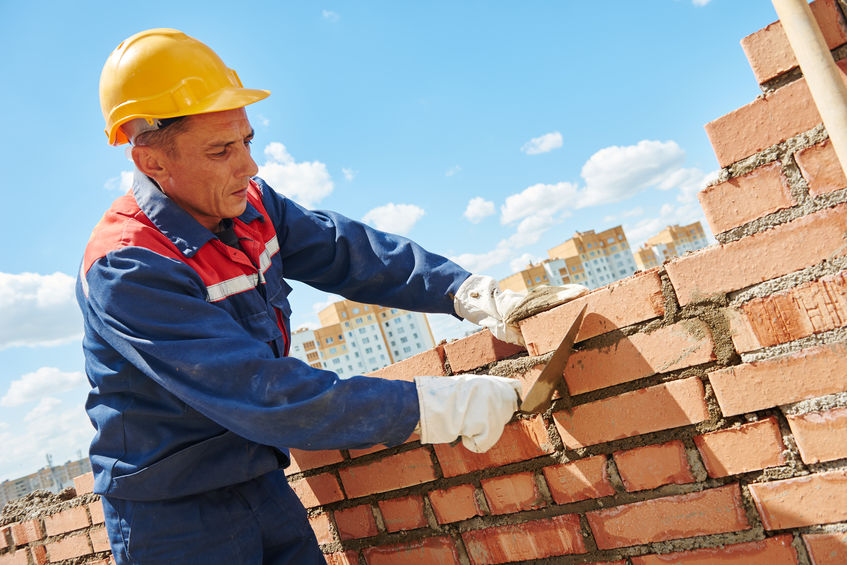Brickwork
Brickwork is quite common because most homeowners prefer to use it on the exterior of houses due to its aesthetic value. Apart from that, brick is quite strong and has a great ability to withstand harsh weather conditions. Although brickwork is more expensive compared to blockwork, it is still attractive for those looking for a low maintenance and long lasting walling solution.

Blockwork
Blockwork is a method of construction that uses cement blocks and large concrete. These blocks are usually larger than normal-sized bricks. However, they are lighter because they have a hollow center, which makes them easier to work with. Blocks are usually used for construction due to their ease of use and cost effectiveness. Although many options for blockwork do exist in the market, blocks are usually rendered. This means that their appearance does not really matter.
Which is Stronger between Brickwork and Blockwork?
Brickwork and blockwork are both quite strong. However, their strength is usually influenced by the quality and type of mortar used to attach them together. All concrete blocks are required to have a compressive strength of about 1900 pounds per square inch. However, many dense blocks are stronger than this. This is because the average concrete block can withstand 3500psi and the average brick should withstand about 3000psi.
Other Factors to Consider When Choosing Between Brickwork and Blockwork
You need to have a look at many other factors when selecting between brickwork and blockwork. This part of the article looks at exactly that.
- Insulation Value
Normal brick walls usually have an insulation value of about 0.2 per square inch. To compare this, plywood has an R-value of 2.5. Brickwork thus has an insulation value comparable to other wood-framed homes. On their part, normal concrete blocks have an R-value of 0.08 per square inch or close to 2.5 for the entire block. Insulated concrete blocks can see an improvement in their R-value to about 1.3 per square inch. Air-entrained concrete blocks can have an R-value of about 3.9.
- Weight
Bricks and blocks are quite heavy. Their specific weight depends on the type of construction and the material used. 8-inch conventional blocks weight about 43 pounds each while one clay brick weight about 5 pounds. It is good to note that a lightweight concrete block can contain about 80% air, making it weigh as little as 20% of a same-sized conventional block.
- Cost
Blockwork and brickwork are both quite inexpensive compared to other types of building materials. One clay brick and one 8-inch concrete block cost between $1 and $2. However, special lightweight blocks can cost $3-$4 each. Despite this, blockwork and brickwork requires a lot of labor, which can bring up the cost significantly.
Which is the Best Masonry between Brickwork and Blockwork?
As you have seen, brickwork and blockwork can be quite different. Therefore, the choice between the two comes down to how you want to build your house, the look you want to achieve, and the flexibility you want to enjoy when building. The cost of both brick and block in your local market can also influence your choice. Some homeowners may prefer brick masonry because they are looking to have lesser maintenance in the future despite the high cost of building that they will incur. On the side, other homeowners may go for blockwork because they are looking to have less cost of construction at the onset then conduct small maintenance along the way in order to keep the blocks properly maintained.
Both brickwork and blockwork masonry are strong, durable, and fire-resistant building materials. They contain thermal mass, which makes them able to retain heat, making up for their low insulation capability. Despite these similarities, the two can be quite different. Therefore, if you are looking to construct a new home or renovate an existing one, it is a great idea to learn the differences between the two. Doing this goes a long way in enabling you to make a proper decision. This article has shown you the key differences. You should hence be well informed when looking for a strong masonry material for your house. If you are still in doubt, you might want to speak to a professional for assistance.
